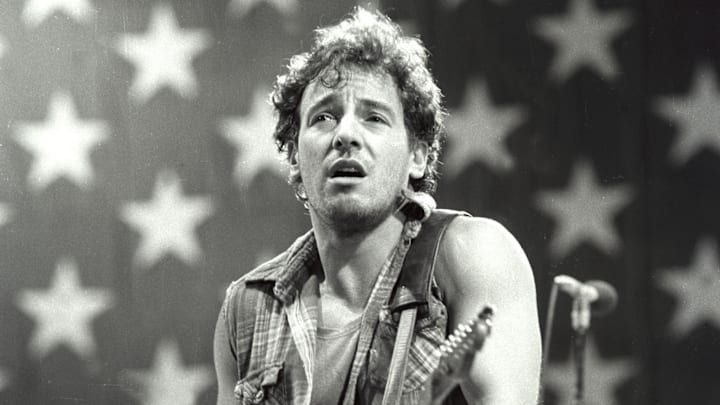It’s not often that an iconic piece of rock & roll is completely reinvented some forty years after its initial release. Then again, it’s not often that an artist like Bruce Springsteen comes along.
Springsteen, who recently released seven “new” albums comprised of tracks he had never made public during his long career, shocked the public yet again on Thursday when he announced arguably the biggest “hidden” album in the history of rock.
That history is littered with rumored projects and “what might have beens,” from the Beach Boys’ Smile, which was released in a watered-down form, to the Dylan/Band Basement Tapes, which eventually received a formal release, though not without controversy.
With Springsteen, the details of the early ‘80s recordings that yielded a double dose of extraordinary albums are now a well-known story. But few people had any clue as to just how much music was sitting in a vault, waiting to see the light of day. He gave us all a taste of what is still to come when he dropped a new (or old) recording of one of his most famous songs, “Born in the U.S.A.," as the first salvo in his 37-track Nebraska ’82: Expanded Edition.
“Born in the U.S.A.” in its most natural form
As we learned in Warren Zanes’ sensational 2023 book Deliver Me from Nowhere: The Making of Bruce Springsteen’s Nebraska, 1982’s Nebraska and 1984’s Born in the U.S.A. were photo negatives of each other. This is the basis of the feature film about the Boss, which is about to drop as well.
It highlights the troubled period that followed his commercial breakthrough, The River, in 1980. He was struggling mightily with who he was as an artist and where he wanted to go. Holed up by himself in a house in New Jersey, Springsteen had bare bones recording equipment on which he laid down a bunch of demos.
These were intended to be songs for the next E Street Band album, but some of them simply didn’t work when the band was included. A group of those songs was released, largely in original demo form, as Nebraska.
Another group of songs from those sessions would indeed get the full band treatment and would form the core of Born in the U.S.A. a few years later.
The stark, stripped down Nebraska, with its brutally honest portraits of America’s have-nots, made it to number 3 on the album charts, but yielded nary a single. It was one of those hugely-influential albums that just wasn’t upbeat enough for popular success.
Born in the U.S.A., on the other hand, was number one all over the world and placed seven singles in the top ten. It was a genuine sensation – one of the 25 biggest-selling albums of all-time.
The most remarkable thing about the two albums is that the songs came from the exact same well of uncertainty and despair. The only difference was that the songs on Born… got the full-blown rock & roll band treatment while the tracks on Nebraska were stripped bare.
That helps explain why the song “Born in the U.S.A.” is one of the most misunderstood tunes in modern music. Like John Fogerty’s “Fortunate Son,” it is an anthemic number that initially sounds like a proud pronouncement of American identity. It isn’t until you actually listen to the words that you hear the dark critique at their core.
This new version of “Born in the U.S.A.” comes from the second of four disks which make up Nebraska’s expanded edition. It features stripped down, electrified versions of songs from both albums. It figures to be the most exciting part of the new release.
This version of the song begins with a brief countdown and then the whining drone of an electric guitar. Drums come in in but they are subdued, not the bold thrash we hear on the original. Most notably, there is no martial synthesizer commanding attention.
Springsteen’s vocals dominate, but it is not the shouted, rhythmic voice we have come to know. Here, his vocals are more subdued and sinewy. They are not defiant. They are weary, and they wind through the verse in a manner that is almost unrecognizable at first. When he reaches the chorus, he does not punch the “Born.”
But make no mistake. This is just as intense as anything he has ever sung. What I am calling weariness takes on a life of its own and renders a recording much closer to the song’s lyrical content. Whereas the original has an irony contained in the juxtaposition of its bold performance and critical message, this version is all of one piece.
This offers a tantalizing glimpse of what Nebraska might have sounded like had Bruce and the band ever figured out a way to cut the tracks to everyone’s liking back in 1982. Of course, had that happened, he would not have scored the massive hit he had with the 1984 album. And on some level, the singer and his management team understood that.
It is hard to listen to this newly dropped recording and think that Bruce thought he hadn’t captured that song with some electric accompaniment. This new recording is exceptional. We can’t hear it with virgin ears, so we can’t know how we would have received it had this been the original release.
But we are fortunate enough to hear it now, because it is a truly great treatment of a truly great song. It is, to my ears, better than its more well-known version.
And just think, we get seven more electrified Nebraska tracks still to come, in addition to plenty of demos and live recordings. Talk about Christmas in September.
